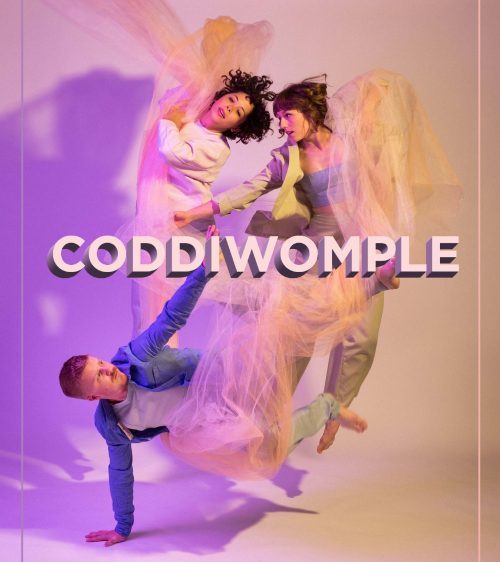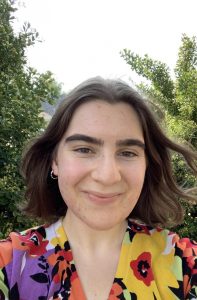‘Coddiwomple’ at the School of Dance Showcases the Endless Possibility in Contradiction

“Coddiewomple” promo (Courtesy University of Utah School of Dance)
December 8, 2021
On Dec. 2, the University of Utah’s School of Dance premiered “Coddiwomple,” a concert showcasing thesis work from Modern Dance MFA candidates Jessica Boone, Austin Hardy and Virginia Broyles. In “Coddiwomple,” the activity of dance and the physical space of the stage felt like an ongoing experiment that tested the perceived boundaries and binaries we use to define, make and experience the arts.
Coddiwomple
“Coddiwomple” — to travel in a purposeful manner toward a vague destination.
The word itself seems to be a contradiction. How can something be both purposeful and vague? Are these things mutually exclusive or can they coexist? The piece “Coddiwomple” was an intentional wandering that embraced and challenged contradiction, exploring all its aesthetic possibilities.
Boone’s “Something Whole and Unfinished” combined dance as a performance art with visual art. Dancers stuck bright splotches of yellow, teal and orange color onto several on-stage canvases and each other, as though engaged in a continuous process of artmaking.
The piece blurred lines between different categories of art, allowing dance and other kinds of art to exist in the same space. Tenderness shines through in moments of hand-to-hand touch and leaning on one another. Lighting made the stage an inviting space of pink and purple, compelling the audience into it like an art gallery.
“Cyber Synesthesia,” a piece by Hardy, began with loud operator sounds and light blackouts. After each blackout, more dancers appeared on stage, multiplying like bits of digital information. The juxtaposition of digital and analogue was reflected in movement style that went from rigid and abrupt to soft and elongated. Sound and music choice added to the contrast between digital and analogue — electronic music was balanced with acoustic music and an excerpt from Bo Burnham’s musical comedy “Inside.” “Cyber Synesthesia” challenged the digital-analogue binary, creating a hybrid space where the two coexist.
Broyles’ “Hand-stitched Electric” featured a rectangular box open to the audience on one side. When the open side of the box faced the audience, dancers performed within its confined space. When the box was turned away from the audience, it appeared as though dancers emerged from it, resulting in a spatial puzzle for us to ponder. The box transformed the stage from static to ever-changing. At one point it functioned as a kitchen table the dancers gathered around. While the box sometimes appeared as a constraint for the dancers, through constraint it produced a range of possibilities for the performance.
Aesthetic Potential
“Coddiwomple” questioned perceived binaries — whole and unfinished, digital and analogue, limit and possibility — charging them with potential and exploding them with possibility. What are the aesthetic opportunities that present themselves when we go beyond binaries and embrace contradiction? “Coddiwomple” asks this question at a crucial moment in artmaking, one at the crossroads of a digitally-charged and post-pandemic world where art and its exhibition are changing. I’m not sure the goal of “Coddiwomple” was to provide us with definitive answers to this complex question, but rather to offer many answers.
Upcoming School of Dance performances include “Spring Dance 1” which runs from Feb. 17-26. For more information on upcoming performances, visit the School of Dance website. To stream future School of Dance performances free of charge, visit dance.utah.edu/virtualshows.







